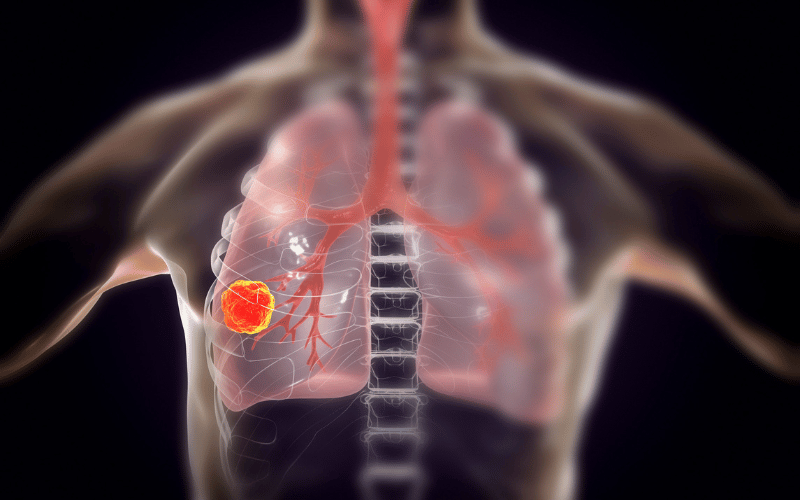3. Lung Carcinoid Tumor: The Slow-Moving Enigma

Lung Carcinoid Tumors offer a fascinating deviation from the ‘normal’ lung cancers. Accounting for fewer than 5% of all lung cancer diagnoses, these tumors grow extremely slowly. They present a less aggressive face of lung cancer, almost like the tortoises in a field of hares.
These tumors have an affinity for the hormone-producing cells of the lungs. The cells in question are neuroendocrine cells, but unlike in SCLC, these cells grow at a snail’s pace. When they do form tumors, the masses are often smaller and localized.
One intriguing aspect of Carcinoid tumors is their unpredictability in symptom manifestation. Symptoms often mimic less severe respiratory issues, like asthma or bronchitis. This leads to a wide range of initial diagnoses, and sometimes, the cancer isn’t detected until later stages.
Due to the slow progression, surgery is often effective in removing localized tumors. When surgery isn’t feasible, somatostatin analogs, drugs that halt excess hormone production, might be used to control symptoms. This is especially useful in controlling Carcinoid syndrome, characterized by flushing and diarrhea, which occurs in a minority of patients.
Radiation and chemotherapy are generally less effective for this type of cancer, primarily because these cells are less sensitive to such treatments. This characteristic makes Carcinoid tumors a unique class within the broader category of lung cancers, adding another layer to the complexity of this disease. (3)